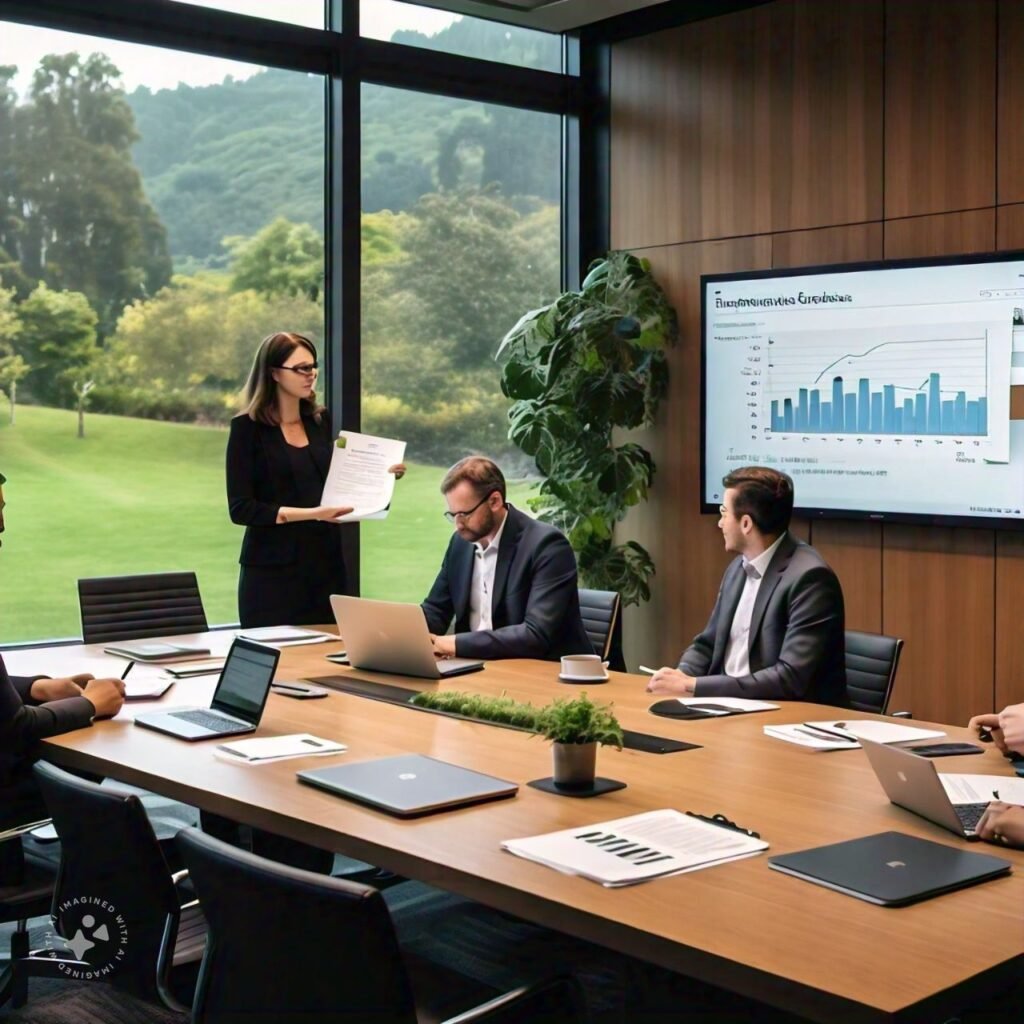In the world of business, the term “rainmaker” is often used to describe individuals who are exceptional at driving revenue, closing big deals, or securing high-profile clients. These people are invaluable assets to their organizations, and their ability to generate success can sometimes place them on a pedestal. However, there’s a hidden downside to relying too heavily on these individuals. What happens when the rainmaker leaves, loses momentum, or burns out? How do you ensure long-term success without over-reliance on a single person?
This blog post will explore how businesses can thrive in a rainmakerless model, focusing on decentralized leadership, fostering a collaborative culture, and building a more sustainable, resilient organization.
What Does “Rainmakerless” Mean?
Before diving into how to operate in a rainmakerless environment, it’s important to understand the term. A rainmaker is someone who “makes it rain” – metaphorically, they bring in deals, clients, or money in a way that seems almost effortless. They are often top salespeople, charismatic leaders, or powerful networkers who have a special ability to influence and drive revenue.
Being rainmakerless, on the other hand, refers to an organization that either doesn’t have a single individual driving its success or consciously chooses not to rely too heavily on one person. It’s about creating a business model where success is more distributed across teams, systems, and strategies. While rainmakers can be incredible assets, over-reliance on one person can be risky.
The Risks of Relying on a Rainmaker
Relying heavily on one rainmaker can present several risks to an organization:
1. Dependency on One Individual If the entire sales pipeline or the majority of business development is driven by one individual, the organization becomes highly dependent on that person. If they leave or are unavailable for any reason (vacation, burnout, illness), the business can quickly lose momentum, leading to revenue dips or missed opportunities.
2. Cultural Imbalance Rainmakers often gain significant influence and power within organizations due to their ability to generate revenue. This can create a culture where others may feel overshadowed or undervalued, and in some cases, it can lead to resentment or friction between teams.
3. Limits to Scalability No matter how talented a rainmaker is, they can only do so much. Relying on one person to drive growth may limit the organization’s ability to scale effectively. Rainmakers have finite time and energy, and without the proper systems or teams in place, growth potential can be capped.
4. Burnout Risk Being a rainmaker can be an incredibly high-pressure role. The responsibility of driving business success often falls squarely on their shoulders, which can lead to burnout. If the rainmaker is constantly working to keep the company afloat, it’s only a matter of time before they may need a break or feel overwhelmed.
Why a Rainmakerless Model is the Future of Sustainable Business

In today’s rapidly changing business landscape, sustainable growth is more important than short-term success. Building a business that can thrive without relying on one individual is key to long-term resilience. Here are some reasons why a rainmakerless model is becoming more popular:
1. Decentralized Leadership is More Resilient In a rainmakerless model, leadership is distributed across the organization. This means that there are multiple people responsible for driving success, rather than one key individual. A decentralized leadership model ensures that if one leader leaves or steps down, others are ready to step up, keeping the organization running smoothly.
2. Team Collaboration Drives Innovation Organizations that encourage team-based collaboration and innovation tend to be more adaptive to change. Instead of relying on one rainmaker to come up with big ideas or close major deals, the entire team works together to drive results. This fosters creativity, as people with different skill sets and perspectives can contribute to the success of the business.
3. Scalability and Growth When growth is driven by multiple individuals or teams, rather than a single rainmaker, scalability becomes more feasible. Each team member brings unique strengths to the table, and when empowered to take ownership of their contributions, the organization’s ability to grow expands exponentially.
4. Employee Retention and Satisfaction A rainmakerless culture often results in higher employee satisfaction. When success is shared among the entire team, rather than attributed to one star performer, employees feel more valued and appreciated for their efforts. This leads to higher engagement, better morale, and ultimately, lower turnover.
How to Transition to a Rainmakerless Model
Transitioning to a rainmakerless model requires a shift in mindset and organizational structure. Here are some steps companies can take to build a more sustainable, decentralized model of success:
1. Invest in Team Development The first step to building a rainmakerless model is investing in the development of your entire team. Instead of focusing resources on supporting one or two top performers, invest in training and development opportunities for everyone. Encourage continuous learning and provide employees with the tools they need to succeed in their roles.
2. Create Clear Systems and Processes A rainmakerless organization relies on clear, repeatable systems and processes that can be followed by any team member. This reduces the need for one individual to be the “go-to” person for driving revenue. By creating strong systems, you empower the entire team to step in and contribute to success.
3. Foster a Culture of Collaboration Collaboration should be a core value in a rainmakerless organization. Encourage cross-functional teamwork, open communication, and the sharing of ideas. This type of culture promotes innovation and ensures that success is the result of a collective effort, rather than the work of one individual.
4. Develop Multiple Leaders In a rainmakerless model, leadership is not confined to the top echelons of the company. Encourage leadership at all levels by providing opportunities for employees to take ownership of projects and initiatives. This helps to distribute responsibility and ensures that there are multiple leaders who can step in to drive success.
5. Use Data to Inform Decision-Making One of the most important aspects of a rainmakerless model is using data to guide decision-making. When success is tied to the efforts of multiple individuals or teams, it’s crucial to track performance and identify areas for improvement. Data-driven insights help ensure that every part of the organization is contributing to growth.
Case Studies: Successful Rainmakerless Organizations

Let’s take a look at a few examples of companies that have successfully transitioned to or thrived in a rainmakerless model:
1. Basecamp Basecamp, a project management software company, has long embraced a decentralized approach to leadership and success. The founders, Jason Fried and David Heinemeier Hansson, have been vocal about the importance of building a sustainable company that doesn’t rely on star performers. Instead, Basecamp focuses on creating a collaborative environment where everyone contributes to the company’s success.
2. W.L. Gore & Associates The company behind GORE-TEX, W.L. Gore & Associates, operates with a unique organizational structure known as a “lattice” structure. There are no traditional managers or hierarchy, and teams are empowered to self-organize around projects and initiatives. This approach allows the company to innovate and grow without relying on one rainmaker or a traditional top-down leadership model.
3. Valve Corporation Valve, the video game company behind popular titles like Half-Life and Portal, is known for its flat organizational structure. There are no formal titles, and employees are encouraged to take ownership of projects that interest them. This decentralized approach has helped Valve remain innovative and successful without relying on individual rainmakers.
Conclusion: Building a Rainmakerless Future
In a world that often celebrates star performers and charismatic leaders, it’s easy to overlook the value of building a business that thrives without a single rainmaker. By creating a culture of collaboration, decentralizing leadership, and investing in the development of the entire team, organizations can build sustainable success that isn’t reliant on one person’s abilities.
A rainmakerless model is not about eliminating the importance of strong leadership or top performers—it’s about distributing responsibility and empowering everyone to contribute to the success of the organization. In the long run, this approach leads to more resilient, adaptable, and scalable businesses that are better equipped to navigate challenges and seize opportunities for growth.

